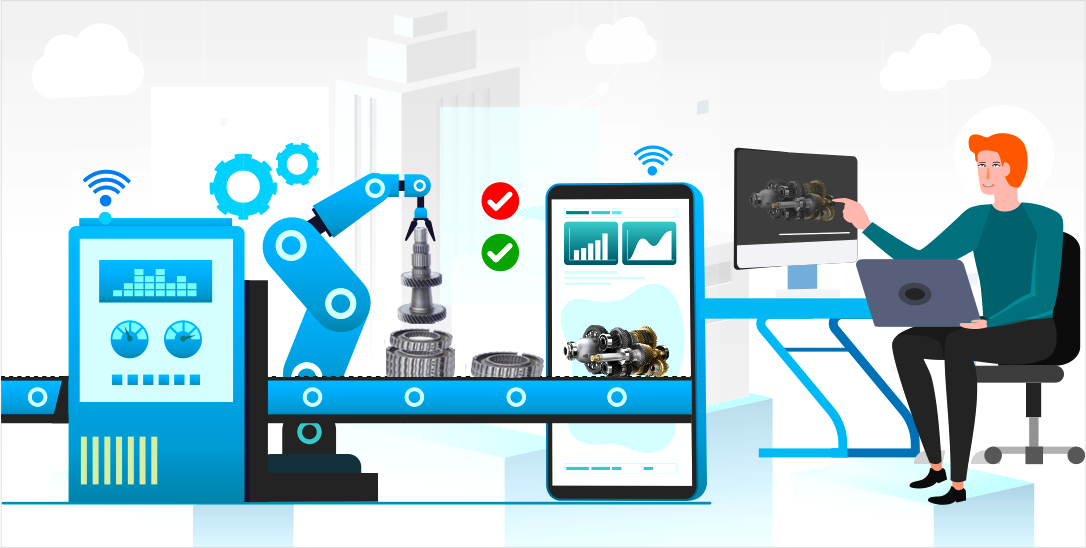Discover how AI-driven predictive maintenance is transforming industrial automation. Learn about its benefits, challenges, real-world applications, and future trends in improving equipment reliability and reducing costs.
In today's fast-paced industrial landscape efficiency and reliability are critical to maintaining competitive advantage. One of most promising advancements in this realm is AI-driven predictive maintenance. This technology is revolutionizing industrial automation. It predicts equipment failures before they occur. This approach enhances operational efficiency. It also significantly reduces maintenance costs and downtime.
Understanding Predictive Maintenance
Predictive maintenance is proactive approach to managing industrial machinery and equipment. Unlike traditional maintenance methods which are either reactive or preventive, predictive maintenance uses data and advanced algorithms. It predicts when equipment is likely to fail. This allows maintenance to be performed just in time. It prevents unexpected breakdowns and extends lifespan of machinery.
The Role of AI in Predictive Maintenance
Artificial intelligence plays crucial role in enhancing the accuracy and effectiveness of predictive maintenance. Machine learning algorithms analyze vast amounts of data. This data comes from sensors embedded in industrial equipment. It can include temperature vibration, noise and other operational parameters. By continuously monitoring these variables AI systems identify patterns. They also find anomalies that indicate potential issues.
One of the key advantages of AI-driven predictive maintenance is its ability to learn and improve over time. As more data is collected and analyzed, the algorithms become more accurate in predicting failures, leading to even greater efficiency and reliability in industrial operations.
Benefits of AI-Driven Predictive Maintenance
There are several benefits of implementing AI-driven predictive maintenance in industrial settings. First and foremost, it reduces unexpected downtime. By predicting when equipment is likely to fail, maintenance can be scheduled at convenient times, minimizing disruptions to production schedules. This leads to increased operational efficiency and productivity.
Another significant benefit is cost reduction. Traditional maintenance methods often involve replacing parts or performing maintenance that may not be necessary. Predictive maintenance, on the other hand, ensures that maintenance activities are only performed when needed, reducing unnecessary costs. Additionally, by preventing catastrophic failures, it can save companies from expensive repairs and replacements.
Furthermore, predictive maintenance extends the lifespan of equipment. By addressing issues before they lead to major failures, machinery is kept in optimal condition for longer periods. This not only reduces capital expenditures but also contributes to sustainability by minimizing waste and the need for new equipment.
Implementation Challenges and Considerations
While the benefits of AI-driven predictive maintenance are clear, implementing this technology in industrial settings comes with its own set of challenges. One of the primary hurdles is the initial investment in sensors, data infrastructure, and AI systems. While the long-term savings often outweigh these costs, the upfront expenditure can be a barrier for some companies.
Another challenge is the need for high-quality data. Predictive maintenance relies on accurate and comprehensive data to make reliable predictions. Incomplete or noisy data can lead to incorrect predictions and undermine the effectiveness of the system. Therefore, companies must invest in robust data collection and management systems to support their predictive maintenance initiatives.
Additionally, integrating AI-driven predictive maintenance into existing industrial processes can be complex. It requires collaboration between various departments, including IT, operations, and maintenance teams. Proper training and change management are essential to ensure that all stakeholders understand the technology and can effectively use it to improve maintenance practices.
Case Studies and Real-World Applications
Several industries have successfully implemented AI-driven predictive maintenance with impressive results. In the manufacturing sector, for instance, companies like Siemens and General Electric have integrated AI systems into their maintenance practices. These systems continuously monitor equipment health and predict failures, leading to significant reductions in downtime and maintenance costs.
In the energy sector, predictive maintenance is being used to manage the health of wind turbines and other renewable energy assets. By predicting when components are likely to fail, maintenance can be performed during periods of low energy demand, ensuring maximum availability and efficiency of these critical resources.
The transportation industry is also benefiting from AI-driven predictive maintenance. Airlines, for example, use predictive maintenance to monitor the health of aircraft components. By predicting failures before they occur, airlines can schedule maintenance during ground time, minimizing disruptions to flight schedules and improving passenger satisfaction.
Future Trends in AI-Driven Predictive Maintenance
The future of AI-driven predictive maintenance looks promising, with several trends likely to shape its development. One of the key trends is the integration of Internet of Things (IoT) technologies. IoT devices can provide real-time data from a vast array of sensors, further enhancing the accuracy and effectiveness of predictive maintenance systems.
Another trend is the use of advanced analytics and machine learning techniques. As these technologies continue to evolve, predictive maintenance algorithms will become even more sophisticated, capable of predicting a wider range of failures and providing more actionable insights.
Additionally, cloud computing is expected to play a significant role in the future of predictive maintenance. Cloud-based platforms can provide the necessary computational power and storage capacity to analyze large datasets in real-time. This will enable companies to scale their predictive maintenance efforts and leverage AI capabilities more effectively.
Conclusion
AI-driven predictive maintenance is revolutionizing industrial automation by enabling companies to predict equipment failures before they occur. This proactive approach enhances operational efficiency, reduces maintenance costs, and extends the lifespan of machinery. While implementation challenges exist, the benefits far outweigh the costs, making predictive maintenance a valuable investment for companies across various industries. As technology continues to evolve, the future of AI-driven predictive maintenance looks bright, promising even greater advancements in industrial automation and reliability.
